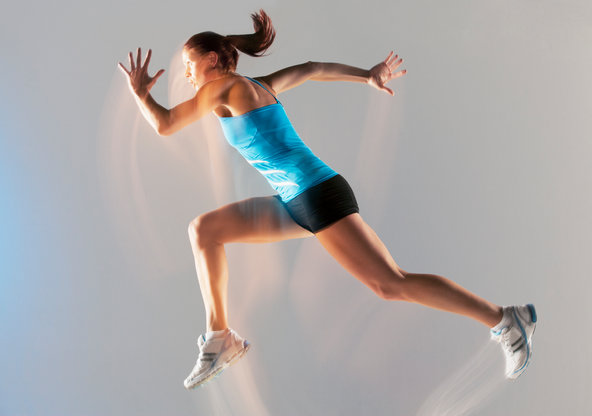By ADMIN on October 24, 2013
This week's featured therapist is chiropractor Neil Gomer. Appointments with Neil can be made at the Athlete's Care Mississauga and Oakville locations.
 Athlete's Care Mississauga
Athlete's Care Mississauga
In One Health Clubs, 2021 Cliff Road
tel. 905.275.0182 905.275.0182
905.275.0182
Athlete's Care Oakville
In One Health Clubs, 1011 Upper Middle Rd. East
te. 905.847.4007 905.847.4007
905.847.4007
Dr. Neil Gomer is a graduate of the Canadian Memorial Chiropractic College. He also holds a Bachelor of Science degree in Human Kinetics from the University of Windsor. Dr. Gomer utilizes his skills in chiropractic manipulation, Contemporary Medical Acupuncture, soft tissue techniques such as ART® and the Fascial Abrasion tool as well as performance taping to provide care to his patients.
Under this Functional Integrated Therapy (F.I.T.) approach, Dr. Gomer provides not only injury care but also performance care and optimization. As a life-long athlete, Dr. Gomer has a continued interest in sports and sports related injuries. He also maintains an active lifestyle in the gym and plays baseball, golf, squash and tennis.
... moreBy ADMIN on October 18, 2013
Article by Miriam Stix, originally published in the Globe and Mail.
Soft cushioning in shoes has been marketed to runners as extra shock-absorption to prevent injuries, but in a new study the added padding made no difference in who got hurt.

Researchers tested identical-looking shoes with different levels of cushioning in a blind trial with nearly 250 regular runners and found factors like body weight and overall fitness made some difference to injury rates, but shoe-softness did not.
“The results do not support the common argument from the running-shoe industry that runners with higher body mass should be recommended shoes with greater shock-absorption characteristics,” said lead author Daniel Theisen of the Sports Medicine Research Laboratory of the Department of Public Health in Luxembourg.
Based on research showing that cushioning can relieve certain mechanical stresses on the body, Theisen, a physical therapist with a PhD in sports science and a runner himself, says he fully expected to see a difference.
But past tests of extra cushioning under real-world conditions, such as U.S. Air Force recruits in basic training, have not shown a clear benefit, Theisen and his colleagues write in the British Journal of Sports Medicine.
So Theisen’s team set up what it believes to be the first randomized, double-blind controlled trial of whether shoe sponginess affects running-related injuries in leisure runners.
The researchers recruited runners through newspaper advertisements and Internet sites and randomly divided the 247 participants into two groups. The men and women were all between the ages of 30 and 50 years old, had body mass indexes (a measure of weight relative to height) ranging from normal to slightly overweight and all ran a minimum of 10 miles a week.
Participants got shoes provided by “a renowned sports equipment manufacturer,” according to the report, which were customized versions of a model sold in stores. There were no identifying decorations on the shoes, and all appeared identical except that half of the pairs had a soft midsole – a spongy layer beneath the insole of the shoe’s interior. The difference in shock-absorbing qualities between the shoes with and without the extra cushioning was calculated to be about 15 per cent.
According to Theisen, this was the greatest difference possible while still producing a shoe that looked the same to users. Even the researchers did not know which participants received the softer shoes.
The runners were required to train at least once a week, to only use the shoes for running and to report their training data and any injuries. Participants used the shoes for five months, and posted information about how much they ran and what kinds of injuries they experienced on a dedicated Internet platform.
Out of the 69 runners whose injuries were counted, 32 used the hard-soled sneakers, and 37 used the softer-soled shoes.
Although the researchers found no significant difference in injuries based on shoe cushioning, they did note some differences related to runners’ body mass and other individual traits and behaviour.
Heavier runners were about 13-per-cent more likely to have injuries than those in the normal weight range – and shoe softness did not modify that extra risk for heavy runners who got the softer shoes. Having a previous injury added about 75 per cent to runners’ injury risk and higher-intensity training added 39 per cent to the risk.
In contrast, previous running experience more than halved a runner’s injury risk relative to those with no experience. And participants with the highest levels of weekly participation in other types of sports had about 30-per-cent lower risk of running injuries.
Theisen says the results suggest that running style and other personal factors outweigh shoe qualities in determining injury risk. Individuals tend to adapt their running style based on the pattern of how their feet strike the surface, he said. Although the study did not analyze this factor, the authors think this adaptation cancels out the shock-absorbing characteristics of the soft-cushioned shoes.
The difference between the study shoe models may also have been too small to detect a difference, he notes. In general, however, Theisen thinks the study results “make good sense because our ancestors were great runners but they never wore running shoes.”
Dr. Mark P. Kelly, an exercise physiologist with the American Council on Exercise and a veteran runner himself, was not surprised by the findings.
If anything, cushioning “takes away from the tactile sensation that tends to protect a runner,” Kelly, who is currently investigating the effects of so-called minimal shoes on running injuries and running gait, said. “In other words, if something hurts our feet when we are jogging, we will naturally change things up so it doesn’t hurt. If anything, a harder midsole offers more protection, because it may induce more stability on the plantar surface of the foot and thus spread the impact out more evenly.”
... moreBy ADMIN on October 17, 2013
This week's featured therapist is Massage Therapist Purdey Ali. We are pleased to welcome Purdey to our Athlete's Care Brampton location.
Athlete's Care Brampton
180 Sandalwood Pkwy East
Heart Lake Town Centre
tel. 905.495.4409 905.495.4409
905.495.4409
Born on the island of Trinidad, Purdey came to Canada when she was 10 years of age. She originally ventured in the field of dentistry, which led her to study at Algonquin College to become a Registered Dental Hygienist. About 10 years later her interests evolved into relieving stress and promoting relaxation for a busy and hectic world. Her passion steered her to return to study at Humber College where she completed a 3 year advanced diploma program in Massage Therapy and is current registered with the College of Massage Therapists of Ontario.
Purdey had the opportunity to work in a variety of settings such as, People with Aids Foundation in Toronto, Black Creek community centre (chronic illnesses), PEAC school for elite athletes, an early childhood centre in Brampton (infant massage), Baycrest Hospital (palliative care), and Acquired Brain Injury in Mississauga. She also has experience at the Humber Spa where she treated various musculoskeletal conditions such as tendinitis, scoliosis, temporomandibular joint disorder and osteoarthritis. In addition she has treated problems such as anxiety, insomnia, and is also capable of performing breast massage/prenatal care.
She also completed comprehensive assessments, developed client centered treatment plans attaining proper consent and confidentiality. The treatment plans included home care and remedial exercises. Some of her techniques include Swedish massage, myofascial release, percussion, PNF stretching, joint mobilizations/traction, and hydrotherapy. She also has experience using paraffin wax baths, ultrasound and electrical modalities to promote healing.
Overall Purdey is an intuitive and pleasant therapist hoping to achieve the best results for her clients.
... moreBy ADMIN on October 10, 2013
This week's feature therapist is Physiotherapist Robin Valadares. Robin is currently at our Athlete's Care Oakville location.

Athlete's Care Oakville
at One Health Clubs
1011 Upper Middle Rd East
tel. 905.847.4007 905.847.4007
905.847.4007
Robin received his Masters Degree in Physiotherapy at McMaster University. Previous to that, he obtained a Bachelor of Kinesiology from Queen’s University. Robin is very sports oriented, is credentialed with Sports Physiotherapy of Canada, and is pursuing his Sports Diploma.
He has a special interest in manual therapy and is also currently completing his post graduate levels in that field. His therapy is founded on manual therapy, home exercises, education and acupuncture.
Outside the clinic, Robin is an avid golfer and a general sports enthusiast. He was an excellent soccer player until an injury cut short that promising career. He is a faithful and ever hopefully fan of the Maple Leafs.
... moreBy ADMIN on October 03, 2013
This week's featured therapist is Chiropractor Trevor Vander Doelen. Trevor is currently at our Athlete's Care location in Liberty Village.

Athlete's Care in Liberty Village
171 East Liberty Street, Unit 151
Tel: 416.588.5880 416.588.5880
416.588.5880
Dr. Trevor Vander Doelen earned his Doctorate of Chiropractic from the Canadian Memorial Chiropractic College following an Honours Bachelor of Science Degree in Kinesiology from Laurentian University. Along with his chiropractic education, Dr. Vander Doelen is also trained in whole body Active Release Technique® and Contemporary Medical Acupuncture from McMaster University.
Dr. Vander Doelen takes an integrative approach to care of the athlete, incorporating joint manipulation, neurofunctional electroacupuncture, myofascial release, performance taping, custom orthotics casting, and corrective exercise to help athletes recover from injury and improve performance. He has a special interest in endurance athletes, functional movement training, and performance care. He regularly speaks to athletic groups and contributes to magazines.
Dr. Vander Doelen is a former Toronto Lifeguard Champion and has received the Toronto Emergency Medical Services Citizenship Award. He maintains an active lifestyle involving recreational athletics, specifically beach volleyball, water skiing, squash and triathlon.
... more
By ADMIN on October 01, 2013

One of the most entrenched beliefs about running, at least among nonrunners, is that it causes arthritis and ruins knees. But a nifty new study finds that this idea is a myth and distance running is unlikely to contribute to the development of arthritis, precisely and paradoxically because it involves so much running.
It’s easy to understand, of course, why running is thought to harm the knee joint, since with every stride, ballistic forces move through a runner’s knee. Common sense would suggest that repeatedly applying such loads to a joint should eventually degrade its protective cartilage, leading to arthritis.
But many of the available, long-term studies of runners show that, as long as knees are healthy to start with, running does not substantially increase the risk of developing arthritis, even if someone jogs into middle age and beyond. An impressively large cross-sectional study of almost 75,000 runners published in July, for instance, found “no evidence that running increases the risk of osteoarthritis, including participation in marathons.” The runners in the study, in fact, had less overall risk of developing arthritis than people who were less active.
But how running can combine high impacts with a low risk for arthritis has been mysterious. So for a new study helpfully entitled, “Why Don’t Most Runners Get Knee Osteoarthritis?” researchers at Queen’s University in Kingston, Ontario, and other institutions looked more closely at what happens, biomechanically, when we run and how those actions compare with walking.
Walking is widely considered a low-impact activity, unlikely to contribute much to the onset or progression of knee arthritis. Many physicians recommend walking for their older patients, in order to mitigate weight gain and stave off creaky knees.
But before the new study, which was published last week in Medicine & Science in Sports & Exercise, scientists had not directly compared the loads applied to people’s knees during running and walking over a given distance.
To do so now, the researchers first recruited 14 healthy adult recreational runners, half of them women, with no history of knee problems. They then taped reflective markers to the volunteers’ arms and legs for motion capture purposes, and asked them to remove their shoes and walk five times at a comfortable pace along a runway approximately 50 feet long. The volunteers likewise ran along the same course five times at about their usual training pace.
The runway was equipped with specialized motion-capture cameras and pads that measured the forces generated when each volunteer struck the ground.
The researchers used the data gathered from the runway to determine how much force the men and women created while walking and running, as well as how often that force occurred and for how long.
It turned out, to no one’s surprise, that running produced pounding. In general, the volunteers hit the ground with about eight times their body weight while running, which was about three times as much force as during walking.
But they struck the ground less often while running, for the simple reason that their strides were longer. As a result, they required fewer steps to cover the same distance when running versus walking.
The runners also experienced any pounding for a shorter period of time than when they walked, because their foot was in contact with the ground more briefly with each stride.
The net result of these differences, the researchers found, was that the amount of force moving through a volunteer’s knees over any given distance was equivalent, whether they ran or walked. A runner generated more pounding with each stride, but took fewer strides than a walker, so over the course of, say, a mile, the overall load on the knees was about the same.
This finding provides a persuasive biomechanical explanation for why so few runners develop knee arthritis, said Ross Miller, now an assistant professor of kinesiology at the University of Maryland, who led the study. Measured over a particular distance, “running and walking are essentially indistinguishable,” in terms of the wear and tear they may inflict on knees.
In fact, Dr. Miller said, the study’s results intimate that running potentially could be beneficial against arthritis.
“There’s some evidence” from earlier studies “that cartilage likes cyclical loading,” he said, meaning activity in which force is applied to the joint, removed and then applied again. In animal studies, such cyclical loading prompts cartilage cells to divide and replenish the tissue, he said, while noncyclical loading, or the continued application of force, with little on-and-off pulsation, can overload the cartilage, and cause more cells to die than are replaced.
“But that’s speculation,” Dr. Miller said. His study was not designed to examine whether running could actually prevent arthritis but only why it does not more frequently cause it.
The results also are not an endorsement of running for knee health, he said. Runners frequently succumb to knee injuries unrelated to arthritis, he said, and his study does not address or explain that situation. One such ailment is patellofemoral pain syndrome, which is often called “runner’s knee.”
But for those of us who are — or hope to be — still hitting the pavement and trails in our twilight years, the results are soothing. “It does seem to be a myth,” Dr. Miller said, that our knees necessarily will wear out if we continue to run.
This article was published in the New York Times, written by Gretchen Reynolds.
... more